Increasingly, Chinese actors and markets are thickly intertwined in Mexico’s illegal economies, such as drug and wildlife trafficking and money laundering, writes Vanda Felbab-Brown. Here she previews two large reports on these issues — on drug and wildlife trafficking — published by the Brookings Institution in March 2022. This piece was originally published by Mexico Today.
Increasingly, Chinese actors and markets are thickly intertwined in Mexico’s illegal economies, such as drug and wildlife trafficking and money laundering. My column today is a preview of two large reports of mine on these issues the Brookings Institution is publishing in March 2022. The reports and this column are based on over one hundred fieldwork interviews I conducted between October and December 2021 in various parts of Mexico and via virtual platforms with China- and Asia-based international counternarcotics, law enforcement, and government officials, business community representatives, investigative journalists, scholars, and environmental activists.
China is the predominant source of precursor chemicals for Mexican criminal groups – principally the Sinaloa Cartel and Cartel Jalisco Nueva Generación (CNJG) – which then cook fentanyl and methamphetamine from them and smuggle them to the United States and elsewhere. Even though China placed the entire class of fentanyl-type drugs under a controlled regulatory regime in May 2019 and two key fentanyl precursors — NPP and 4ANPP — in 2018, the trade into Mexico remains. As the deputy chief of foreign operations of the U.S. Drug Enforcement Administration (DEA), Matthew Donahue, noted in March 2021, Chinese traffickers have virtually ceased to produce fentanyl analogues and focus solely on precursors, “with an unlimited and endless supply of precursor chemicals . . . coming from China to Mexico.” To a much lesser extent, Mexican criminal groups also source such precursors in India.
Like with meth, fentanyl synthesis in Mexico is now increasingly done from nonscheduled precursors and pre-precursors which are widely used to produce many legal chemicals, making regulatory and law enforcement controls much harder. Mexican methamphetamine from such legal dual-use chemicals is so potent that, as international law enforcement agents told me, CNJG is even trying to push it in Australia, long supplied by East Asian meth.
Chinese precursor sellers include legal companies selling many chemicals. But some sellers specifically cater to drug traffickers, even if they do not necessarily violate Chinese laws. As investigative C4ADS research showed in their directed Spanish-language advertisements, they bundle uncontrolled fentanyl and meth precursors and common cocaine fillers and highlight their capacities to “clear customs in Mexico.”
The physical footprint of Mexican criminal groups in China is minimal, consisting mostly of a few individuals and business trips. In contrast, the presence of Chinese criminal actors, connections, and networks in Mexico is far bigger and growing. Beyond bases in Sinaloa’s Culiacán and Lazaro Cárdená, one of the major transshipment places for precursors, Chinese criminal networks are also believed to have cells in cities like Mexicali, Veracruz, Tampico, and Michoacán’s Aguililla, a transshipment hub for precursors, I was told by current and former U.S. and Mexican government officials and investigative journalists in Mexico. Indicted by the U.S. Treasury Department for fentanyl trafficking, the Zheng Cartel and its storefront Global United Biotechnology Inc. and other cover companies including veterinary care, computer and other retail, and chemical companies, also have operations in Mexico.
Chinese money traders and businesses also increasingly launder money for Mexican cartels. Drazen Jorgic’s Reuters report details Chinese informal money transfer systems that — through mirror transactions in Mexico, China, and the United States — cleanse money of criminals while enabling Chinese businesses and citizens to evade China’s capital controls. These Chinese money transfers are even displacing established Colombian and Mexican money launderers.
Mexico-China wildlife trade is also becoming a mechanism to transfer value in illicit economies and bypass anti-money-laundering controls in U.S. and Mexican banks. As my interviews with current and former U.S. and Mexican government officials, Mexican environmental activists, and Mexican seafood producers showed, more and more, various animal and timber products are used by the cartels to pay for drug precursors. The huge markups that wildlife products register between harvest and retail make them an ideal tool of money laundering and value transfer.
Such value transfer across two illicit economies goes beyond one trafficking network smuggling multiple commodities as, for example, detected in the 2020 U.S. Operation Apex that targeted Chinese nationals in the United States smuggling totoaba bladders and shark fins from Mexico as well as drugs, diamonds, and precious metals.
The amount of value generated by wildlife commodities in Mexico may be only a small percentage of what Mexican cartels owe to Chinese brokers for drug precursors. So wildlife barter will not displace other methods of money laundering and value transfer. But the increasing role of this payment method can devastate biodiversity in Mexico, as the cartels seek to legally and illegally harvest more and more of a wider and wider range of animal and plant species to pay for precursors.
Indeed, while wildlife trafficking from Mexico to China receives little attention, it is growing and poses increasing threats to Mexico’s biodiversity. Like elsewhere in the world, Chinese traffickers source various reptile species in Mexico, including turtles for their meat and pet trade, and crocodilian skins. In Mexico, the mostly retaliatory jaguar poaching by cattle ranchers also increasingly appears to be connected to Chinese markets. As my interviews showed, Mexican environmental NGOs operating along the border with Guatemala and Belize, are now finding jaguar carcasses without paws, teeth, and other body parts, suggesting this loot is heading into China for Traditional Chinese Medicine, as has happened elsewhere in Latin America.
China’s role in the trafficking of Mexico’s marine species is even more extensive, or at least more known. Unregulated or illegal harvested marine products sold to Chinese buyers include shark fin, sea cucumber, lobster, abalone, shrimp, clams, oysters, jellyfish, and, notoriously, totoaba swim bladder. The bladder soup is considered a delicacy in China. The bladder is also a form of investment and speculation in China, with large dried and aged bladders selling for as much as US $60,000-$85,000 per kilo. The gillnets that the fishermen use to illegally capture the totoaba also entangle and drown a very rare mammal, the porpoise vaquita marina.
Like elsewhere in the Americas and globally, hardly all poaching and wildlife trafficking in Mexico is linked to China. Many poached animals, such as parrots, still head predominantly to the United States. Many smuggled reptile skins also end up in U.S. markets where they are desired in Hispanic communities for clothing.
Legal wildlife trade from Mexico to China, while having the potential to provide important income to local communities to incentivize the preservation of ecosystems and species, sometimes serves to launder poached animals. In the Mexico-China trade, such laundering is prominent in the case of crocodilian skins, sea cucumber, abalone, and other marine species. Illegal fishing accounts for a staggering proportion of Mexico’s fish production even in species permitted for offtake and export.
As my fieldwork interviews in Mexico in October and November revealed, across Mexico, organized crime groups, especially the Sinaloa Cartel, are seeking to monopolize both legal and illegal fisheries along the entire vertical supply chain. Prior to that criminal takeover effort, Chinese traders often directly interacted with Mexican fishers. That was the case during the first years of sea cucumber harvesting off Yucatán and initially in abalone and totoaba poaching on the Pacific Coast. But in their effort to monopolize the illegal and illegal fishing industries, Mexican criminal groups have pushed out Chinese traders from direct purchases from local fishermen. Totoaba, sea cucumber, abalone, and jellyfish fishers now need to sell to Mexican criminal groups who then sell to the Chinese brokers. The Chinese traders then ship the contraband from the border of Mexico to China, sometimes through the United States.
Conversely, the interest of Chinese traders in an animal or plant species and efforts to source them in Mexico on a substantial scale for Chinese markets attract the attention of Mexican criminal groups. In southern Mexico, for example, Chinese traders first sought to organize the illegal logging in various rosewood and granadillo tree species among local communities themselves. Their interest has since drawn organized crime groups into the illegal logging.
Former Mexican diplomats told me that drug and wildlife smuggling challenges feature little in China-Mexico diplomacy. For the most part, the Chinese government rejects China’s responsibility for the smuggling of drug precursor chemicals into Mexico, and for poaching and wildlife trafficking in Mexico for Chinese markets, and mostly insists that these problems are for the Mexican government to solve. Cooperation has been minimal and sporadic. The Chinese government has not been keen to formalize either China-Mexico or China-Mexico-United States cooperation against either illegal trade, preferring informal case-by-case cooperation. Nonetheless, every so often, under intense international pressures, the Chinese government has taken law enforcement actions, such as in 2018 moving beyond seizures of the totoaba bladder smuggled to China from Mexico to conducting interdiction raids against retail markets. They pushed the visibility of illegal retail out of public scrutiny — behind closed doors and onto private online platforms, but trafficking continues.
The dominant position of the Chinese government has been that it is up to the Mexican government to enforce its laws within Mexico and to counter poaching and wildlife and drug trafficking there. However, given Mexico’s lack of resources, pervasive corruption, and disinterest of the Andrés Manuel López Obrador administration in either protecting Mexico’s biodiversity or confronting Mexican organized crime groups, Mexico needs every bit of international collaboration, including from China.
The Brookings Institution is committed to quality, independence, and impact.
We are supported by a diverse array of funders. In line with our values and policies, each Brookings publication represents the sole views of its author(s).
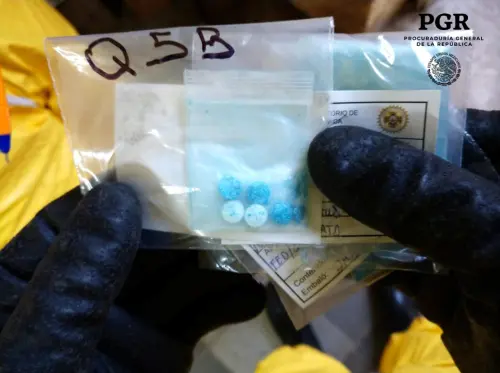
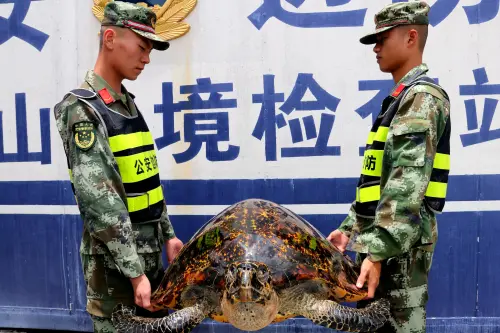


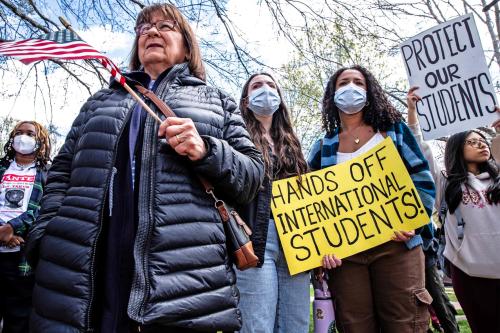
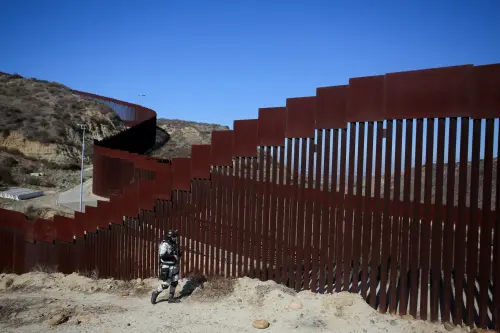
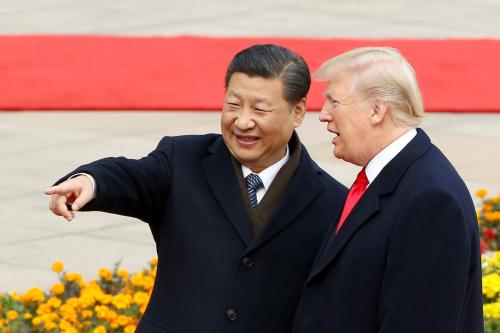
Commentary
Op-edThe China connection in Mexico’s illegal economies
February 4, 2022